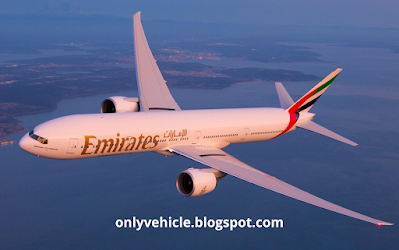Emirates Flight 231, December 20, 2021
On December 20, 2021, an Emirates Boeing 777 was to depart from Dubai International Airport to Washington D.C. During takeoff roll, the plane went all the way to the end of the runway failing to pitch up until reaching the runway safety end area. The plane had even passed V2 speed reaching a maximum ground speed of 216 knots passing very close to residential buildings after the end of the runway. We are going to look at the factors and conditions causing this near miss incident and also ways to prevent this from happening in the future.
Flight Schedule:
The flight bound to the US capital was scheduled to take off at 2:30 AM from Dubai International Airport. Flights from the middle eastern areas to the US take 15 hours or more. The flight had two additional pilots than usual so that operations are continued with crew rest times. This is a normal procedure for long haul flights in all airlines.
Takeoff Roll:
During the takeoff roll, the aircraft had initially passed the V1 speed which is heard by the cockpit crew by the V1 automated callout. V1 is the speed beyond which an aborted takeoff maneuver should not be conducted. The crew may have been fully concentrated on their instruments and flight directors. The plane had even reached V2 speed (The speed at which the aircraft can safely climb with one engine inoperative). By this time, any of the four members of the flight crew in the cockpit should have told the Pilot Flying to watch out.
Takeoff:
The plane finally rotates after reaching the runway safety area (Extended length of the runway for aircraft safety) with a speed of 214 knots, a significantly greater takeoff speed than normal. The typical takeoff speed of a 777-300 airliner is about 160 knots. The plane fortunately misses collision with the runway antennas used for landings and residential buildings beyond the runway. The maximum speed the aircraft reaches is 216 knots ground speed.
Faced Dangers:
The aircraft after takeoff was flying very low to the ground with a very high speed. The Pilot Flying was only focused on the PFD (Primary Flight Display) showing the path indicated by the FD (Flight Directors). The Pilot Monitoring did not point out to the Pilot Flying that they were flying very low to the ground. Alarms for overspeed warnings had gone off telling the pilots that the aircraft's speed was very high. It was also unknown to the pilots if the plane had sustained any damage.
Safe Climb:
After flying through some of the residential areas, and after gaining some amount of altitude, the Flight Directors advised the pilots to pitch down by some angle. The Pilot Flying did as it indicated. Some time after, they realized what was wrong. They saw that the altitude set on the MCP (Mode Control Panel) was 0 feet. After changing it to the initial climb flight level of 4000 feet, the Flight Directors showed correct vertical guidance and the aircraft climbed safely. This clearly explains why the FD indicated to the pilots to pitch down after gaining some altitude. Anyways, the pilots are not bound to act on the advice of the FD and could use it only when needed.
Decision by the Flight Crew:
The decision made by the pilots during flight are very important and should never spoil safety. In this incident, all four pilots elected to continue to Washington D.C. as if nothing had happened. After landing at Washington, the aircraft was thoroughly inspected for any sorts of damage. Since there weren't any, the aircraft was declared airworthy and flew the return scheduled journey from Washington to Dubai without any cancellation. The aircraft A6-EQI was grounded for four days in Dubai before returning back to the skies.
Causes for this Incident and Ways to Prevent it:
The primary cause that was responsible for the accident was the lack of proper pre-flight checks conducted by the pilots. It was said that there were atleast two checklists which could have picked up the incorrect altitude setting in the MCP. Pilots should perform their checklists carefully without rushing up.
This is a clear example to show the importance of visual flying and instrument verification which are done at the same time. Although it was 2:30 AM and was not daytime, the pilots could have judged the altitude of the plane by the lights of the residential areas and if not so, even the PFD.
The choice of the pilots to continue the flights as if nothing had happened was truly a wrong choice and even a potential recipe for disaster. They should have informed the company immediately after reaching a safe altitude.
The flight crew lacked completely situational awareness which allowed this incident to take place. The phase during taxi, takeoff, climb, descent, and landing requires full attention from all pilots.
Eventhough the flight crew who operated the previous flight had set the altitude selection to 0 feet, the new flight crew should have spotted this out and corrected it. The previous flight crew are not to be blamed.
Decision by Emirates:
Following this incident, Emirates sent out a flight crew advisory notice to always set the altitude in the MCP to 4000 feet.
Emirates should give more training to its cockpit crew to carry out pre-flight procedures correctly to prevent any further incidents like this. It was fortunate that this incident remained as it is and hasn't turned into an accident which would have been far more catastrophic.








0 Comments